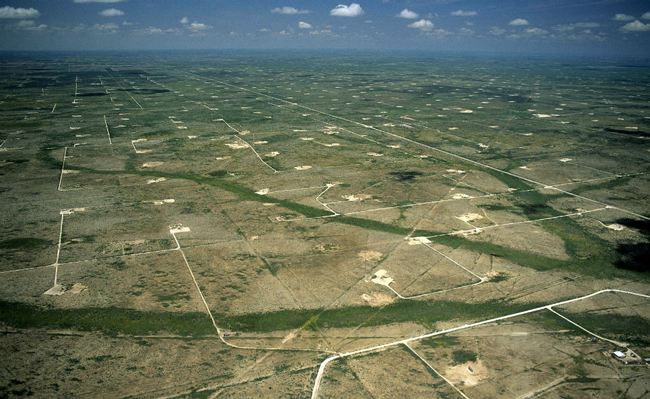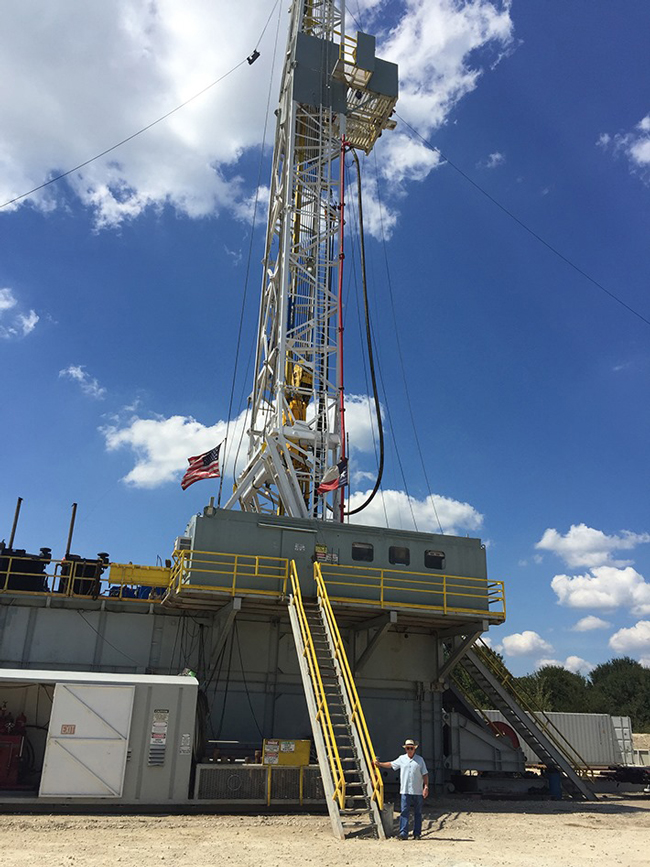
Funding Activity
Unique Model Broadens Capital Base For Oil Field Development
By Kevin Thibeau and J. P. Bolton
BENBROOK, TX.–It is becoming harder to fund oil and gas projects. Investors who once rewarded publicly traded producers for taking on debt to drill new wells now ask those producers to limit debt and return much of their income to shareholders. This has caused many oil and gas companies to adopt more modest budgets and evaluate acquisition opportunities with a more critical eye.
That shift has helped dampen nonspecialized private equity firms’ interest in the oil and gas space. These firms generally backed exploration, drilling and production startups with the understanding they would prove an asset, then monetize it by selling it to a larger producer or going public. Neither strategy is as reliable as it once was.
In today’s capital-constrained environment, we believe it is essential for oil and gas producers to find ways to recruit accredited investors from outside the industry who are looking for above-average return potential. If we give these individuals the right opportunities, they can help us continue to produce the energy that powers everything from hospital equipment to cell phones.
We formed Wheeler Resource Recovery in 2014 to develop a project we felt would be ideal for opening the industry to nontraditional investors. The project is a waterflood on 1,078 acres in Madison County, Tx. It will involve drilling 27 injection wells and 27 production wells to produce from the fertile Woodbine Sands formation and generate strong returns.
Because secondary recovery projects focus on maximizing extraction of known oil rather than searching for new reserves, they are a great fit for nontraditional investors, who tend to have lower risk tolerances. To minimize these investors’ upfront cost and enable them to participate at a wholesale level, we are offering ownership percentages in two-well sets.
When it is complete, Wheeler Resource Recovery’s waterflood project in Madison County, Tx., will have 27 injection wells and 27 production wells. They will be arranged in a checkerboard-like pattern so that each production well is supported by four injectors.
The cumulative cost of drilling all 54 wells will be $100 million. Most operational costs will be covered by oil production. Even at a spot price of $35 a barrel, the recoverable reserve estimate suggests the project will generate $610 million in revenue. At $50 a barrel, that total goes up to $875 million.
The Five-Spot Waterflood Method
Our field is set up using a “checkerboard” approach with alternating injection and production wells. Each production well is surrounded by four injection wells placed on the corners of a 33-acre square, creating an enclosure. We inject water into the injection wells to push as much of the available oil as possible to the centralized production well.
When we explain this process to potential investors, we ask them to picture a pond. Two people on the east and west sides of the pond throw two stones into the water simultaneously. The ripples meet at a central point, creating interference that causes additional waves to expand north and south. It is the same concept with the injection wells, which radiate water out 360 degrees. That water pushes the oil surrounding the injection wells toward the production well, allowing it to recover more oil.
All of this is supported by an environmentally-friendly water reclamation process. The water that comes to the surface alongside the oil is reinjected to mobilize more oil. Recycling the water eliminates the cost associated with transporting and disposing of it and helps conserve a valuable natural resource.
We use reservoir analysis data and information from pre-existing wells to inform the entire procedure. This information helps us regulate and control production, allowing the wells to recover oil efficiently and deliver a better return on investment.
Bringing in Nonindustry Investors
An attractive ROI is important to everyone, but it is especially critical for smaller nonindustry investors. These individuals may want to get involved in the potentially lucrative oil industry, but probably do not have the $50 million or so required to invest in a major waterflood project. Nor can most afford to make a bad investment that will deliver a negative return.
These investors could indirectly support waterflood projects by buying stock in large, publicly-traded companies such as Exxon and BP. If they do, they can look forward to 5%-8% annual returns but will miss out on the tax incentives and profit associated with investing directly in oil field development. Our goal is to make those benefits more accessible.
Our model is simple, yet effective. Investors can purchase small percentages of production and injection wells. We offer them right of first refusal on future packages, which helps them control their risk exposure. They do not need to buy the entire field. They can invest in one set of wells and stop there or back several based on what they are comfortable with.
Tax breaks are plentiful. Investors can deduct 90% of the invested funds, and 15% of the revenue collected is tax free.
We have the track record to ensure the waterflood is successful. Our parent company, Wheeler Operating Corp., has been in business since 1932. It is led by George Jackson, a petroleum engineer with 40 years of experience who specializes in waterfloods. He has helped Wheeler unlock 29 million barrels of oil.
Wheeler Resource Recovery has been drilling production and injection wells at the Madison County waterflood site since 2015. Within a few months of applying the five-spot waterflood method to the field, we began generating revenue for investors.
Finding Efficiencies
Like all oil and gas projects, the amount of revenue the Madison County field ultimately provides will depend on oil prices. Fortunately, secondary recovery projects can have low breakeven prices, with some as low as $20 a barrel. This makes the best projects an excellent choice for small, risk-averse investors.
Even when oil prices fall rapidly, as happened in 2020, there are strong reasons to continue investing in secondary recovery projects. Low prices dampen industry-wide activity and therefore the demand for drilling rigs, pipe and other supplies, which reduces drilling costs. By drilling at these lower costs, we can deliver even stronger returns once prices inevitably recover.
In 2020, Wheeler Resource Recovery continued drilling wells at its Madison County, Tx., project to benefit from lower costs and maximize its investors’ returns once prices recovered.
But like most companies, Wheeler Resource Recovery faced its share of challenges in 2020. In March of that year, when lockdowns halted travel and oil supplies far exceeded demand, we had to cut production to the bare minimum needed to preserve our assets. Also, supply houses stopped carrying parts, and shipping disruptions made getting the few parts they had difficult.
We treated these challenges as a chance to hone our craft and find efficiencies we did not know were available to us. For example, we began manufacturing our own parts and supplies, a process that continues to save a significant amount of money. We also kept drilling and injecting water into the Madison County wells to prime the field so we would be ready for the next upturn.
Higher Prices Ahead
We think that upturn will soon begin. As vaccines become more widely available and people feel more comfortable traveling, eating at restaurants and gathering with friends, the economy will improve and demand for oil and gas will grow.
While demand increases, the U.S. oil and gas industry’s ability to ramp supply may decrease as the Biden administration tightens the regulations governing oil and gas development. It has already begun re-implementing many of the Obama-era policies that Trump’s administration reversed. Ultimately, we think the new administration will impose even greater restrictions and regulations than President Obama.
We already are seeing evidence of a rise in prices reflected across the market. On November 2, 2020, right before the election, the average spot price for West Texas Intermediate was $36.81 a barrel; on January 21, 2021—the day after President Biden’s inauguration—it had risen to $53.13 a barrel.
By March 15, the price had passed $65. That is partly because widespread snowstorms in mid-February temporarily disrupted supplies, but even after the storms’ remaining effects fade, we expect prices to stay strong. We are looking forward to helping investors benefit from those prices.
We see nontraditional investors–people with limited or no experience in oil and gas but sharp minds and ample funds–as essential not only to our future, but to the future of our industry. If oil and gas is to move forward and continue to be a dominant force in the energy sector, we need outside investors who are willing to support it.
The key will be giving these investors a low barrier to entry, meaning an opportunity that is affordable, involves minimal risk and comes with potentially high rewards. Secondary oil recovery projects that are broken into manageable packages and operated by seasoned teams are a great example, because they offer investors a chance to get in on the ground floor without going beyond their risk tolerances.
Given the signs of better days ahead, now is a great time for nontraditional investors to step into oil and gas. We are proud to help them do that.
KEVIN THIBEAU is president of Wheeler Resource Recovery. In that role, he draws on 17 years of experience in oil and gas to manage and structure drilling programs, including overseeing the on-site testing and drilling processes and coordinating day-to-day operations. Before joining Wheeler Resource Recovery, Thibeau structured drilling and production programs throughout Texas, Oklahoma, Louisiana and West Virginia, where he served as an operator and the director of investor relations. In addition to his experience in oil and gas, he has 25 years’ experience managing sales and 20 years in the financial industry.
J. P. BOLTON has served as vice president of Wheeler Resource Recovery since the company’s inception in 2014. He co-founded the company with Kevin Thibeau to drill oil wells and develop entire oil fields across the United States. Before joining Wheeler Resource Recovery, Bolton spent six years as a project manager for an oil and gas operator, where he held the title of “Top Producer” for four years. Along with his 13 years working in oil and gas, Bolton has 25 years of experience in the real estate investment industry. This includes serving as president and owner of Bolton and Associates and holding positions at Marcus & Millichap, a commercial real estate investment sales brokerage.
For other great articles about exploration, drilling, completions and production, subscribe to The American Oil & Gas Reporter and bookmark www.aogr.com.








